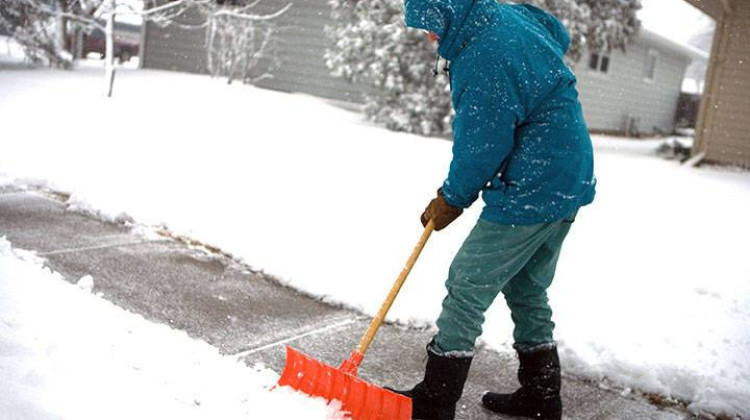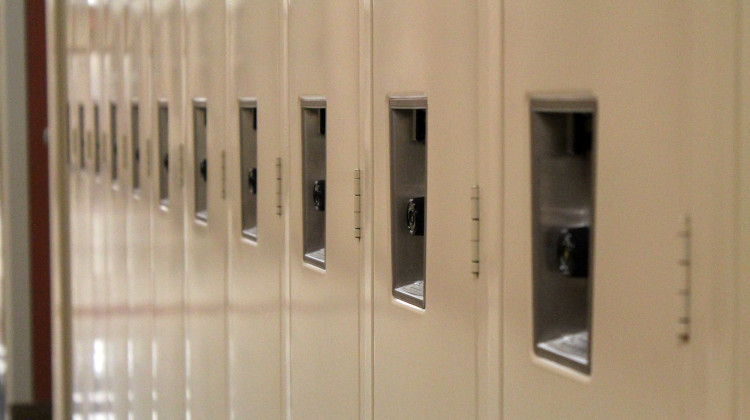A low-head dam is a structure built across a river where water still flows but is very hazardous for users.
Indianapolis announced it will remove one low-head dam as part of an ongoing effort to make the White River safer for recreation, and to improve the river’s ecology. The city secured a U.S. Fish and Wildlife grant this year to remove the dam, which lies downtown, just south of 16th Street.
WFYI’s Jill Sheridan sat down with Friends of the White River Executive Director Scott Salmon to talk about the history of the Emrichsville Dam, and the bigger problem of low-head dams.
This transcript was edited for length and clarity.
Jill Sheridan: This has been an ongoing issue in the White River for many people, as we're looking to traverse the river and make it more user-friendly.
Scott Salmon: Yeah, Indiana has quite a few low-head dams. Many have been removed, but we still probably have over 100 statewide, making the rivers and streams dangerous for people to recreate on, and also fragmenting the ecology of the river system.
Sheridan: Why were they put in originally?
Salmon: It really depends. Some of them though, the oldest ones were put in, like mills, early settlement, we're talking like 1820s to 1840s or 50s. A little bit later, they started being put in for infrastructure purposes. With industrialization, you got machinery that needed cooling, water cools things pretty well, also to get drinking water to treatment plants, so people had drinking water.
Emrichsville was not built for any of those purposes. It was built in the late 1800s for the purposes of recreation. So the idea was Riverside Park, which is bigger than Central Park, it has the river flowing through it. And at the time that Riverside Park was being developed, they decided to turn the river into a lake. It's called Indy Lake. But what they didn't know back then is that [it] was really detrimental to the natural ecology of the White River. The science of ecology hadn't even been invented yet. So, they didn't know what they didn't know. And the consequences, we've been dealing with it for over 100 years now.
Sheridan: So, talk a little bit about how it impacts the ecology.
Salmon: Well, in simple terms, the way I've been explaining a lot lately is, when you have that low-head dam, fish species can't go upstream. And many fish species are dependent on small tributary streams. And so, the fish community is entirely different. The plant community, especially invasive plant species, really thrive in those areas that are backed up by dams.
Sheridan: Let's talk about this particular dam. I mean, it's become a real danger as well, we've seen two kayakers recently passed away.
Salmon: Yeah, the Emrichsville dam has killed three people in the last three years. And that's just unacceptable to have that kind of drowning hazard next to a public park.
The history of Belmont Beach is actually really closely tied with the Emrichsville Dam. So, it was really the dividing line between... you had better water and healthier water and cleaner water upstream of the dam, and downstream where slaughterhouse[s], outfalls and it was nasty stuff. So, that dividing line in the 1920s became a racial dividing line because of the control of the KKK over the City of Indianapolis [and] the segregation of all the Indy Parks facilities. So, you talk about environmental injustice, Belmont Beach and the Emrichsville Dam are pretty good example[s] of the harm we've done to our own citizens.
Sheridan: Also, we're worried about this moving forward in a timely manner. Is that correct?
Salmon: Right. I think the earliest we'll see an excavator with basically a giant jackhammer out there getting rid of the dam would be July of 2025. There are state and federal permits that need to be filed and approved. You know, this is all about safety for recreational users and improving the ecology, and in the springtime fish spawn and so, if you have heavy equipment in that spawning area it can really hurt the reproduction of different fish species. So, there's a moratorium on construction throughout the spring. July 1 is usually when they say work can begin.
Sheridan: So, hopefully?
Salmon: Hopefully, and that's if everything goes right. If the bureaucrats who have been holding things up don't continue to hold things up.
 DONATE
DONATE







 Support WFYI. We can't do it without you.
Support WFYI. We can't do it without you.